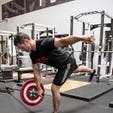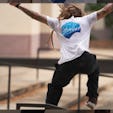Everybody likes to train big muscles like the pecs, lats, and quads, but we don’t give much thought to the smaller ones that we can’t see in the mirror. The problem is, if we don’t develop those little muscles, they can end up causing us big problems in terms of muscle imbalances and injury.
Case in point: the rhomboids. In terms of back musculature, the lats—those big sheets of muscle on the sides of your back, often called the “wings”—are the big man on campus. But if you neglect the rhomboids, it will come back to haunt you by way of poor posture, decreased performance on big upper-body lifts like rows and the bench press, and, eventually, shoulder and/or elbow injury.
Give your rhomboids the attention they deserve, however, and you’ll feel better, walk a little taller (from better posture), and even lift more weight, resulting in a bigger, stronger upper body.
What Are Your Rhomboids?
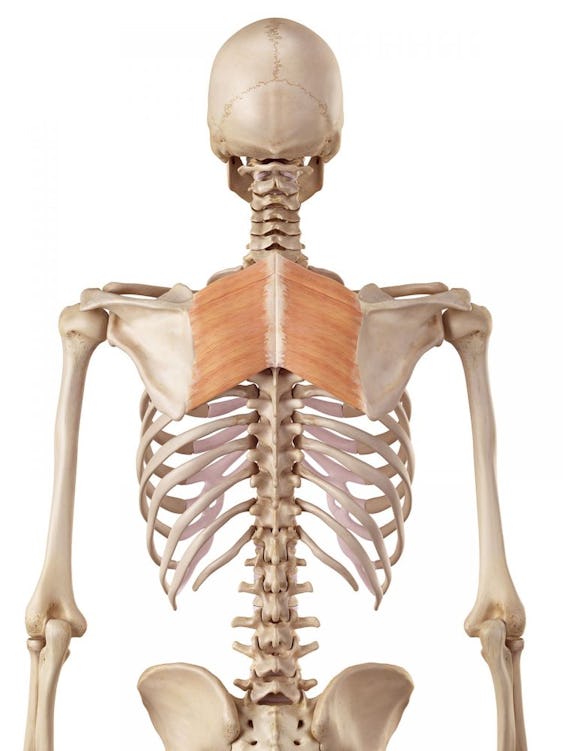
The rhomboids are a pair of upper-back muscles—rhomboid minor, and, directly below it, the larger rhomboid major—that run diagonally from the cervical and thoracic vertebrae of the spine down to the scapulas (shoulder blades) on each side of the body. (They’re rhombus shaped, hence the name.) Despite sitting relatively high up on the back of the body, the rhomboids are often referred to as a “middle back” muscle, because you tend to feel the middle of your back when you do exercises that work them.
The rhomboids are small and thin. They’re dwarfed by the huge latissimus dorsi (lats) and the trapezius (traps) that lie over them. Their unimpressive size and low potential for growth is one reason the rhomboids are often disregarded and undertrained. The lats get all the love on back day.
Another reason is that you can barely see the rhomboids. They’re hidden by the trapezius (particularly the middle and upper portions of the traps) and are virtually impossible to detect unless you’re looking at a high-definition image of a very lean and well-developed physique.
The primary purpose of the rhomboids (both major and minor) is to hold the shoulder blades to the vertebrae in the spine. Their main function is scapular retraction, meaning that they pull the shoulder blades back and together, such as at the end of a properly executed rowing exercise or lat pulldown. The rhomboids also help to raise the shoulder blades up, as in a shrugging motion, as well as draw the shoulder blades downward, such as in a pullup/pulldown motion.
Why Work Out Your Rhomboids?

The rhomboids get worked during back exercises you no doubt already do, but the truth is, they have a low ceiling for growth. No matter what you do, they’re not going to get big and beefy. So why care about strengthening the rhomboids? The answer isn’t sexy, but it’s crucial: because weak rhomboids lead to loss of scapular control. When this happens, the shoulder blades don’t move properly, and that results in injury.
“The rhomboids don’t work in isolation, but they’re part of the whole story of scapular control,” says Ryan Chow, DPT, a physical therapist at Reload Physical Therapy in New York. “If you don’t have scapular control due to lack of rhomboid contribution, you have to pick it up from somewhere else—meaning, other muscles are going to have to do a job they’re not prepared to do and can get worn out as a result. Loss of scapular control leads to excessive motion in the shoulder joint, and could even lead to elbow problems down the road.”
According to John Rusin, PT, DPT, CSCS, owner of John Rusin Fitness Systems, one of the consequences of undertrained rhomboids setting off a chain reaction in your body is “tightness in the neck and upper back that can lead to postural imbalances and incomplete breathing.”
Bad posture is an epidemic these days, due in large part to the constant hunched-forward shoulder position we assume when using our cell phones, typing at a computer, and holding the steering wheel while driving. Focusing too much on upper-body pressing exercises (i.e., bench press, military press) rather than pulling ones (pulldowns, pullups, rows) in the gym only exacerbates the issue.
Increasing the volume of pulling exercises you do can help develop the rhomboids, but this usually just results in greater buildup of the lats, since the body recruits big, strong muscles to do any task they can for the sake of efficiency. The lats don’t attach to the shoulder blades, so postural imbalance may or may not be improved. The only way to make sure the rhomboids get worked sufficiently is to hit them with exercises that really isolate the area.
How To Train The Rhomboids
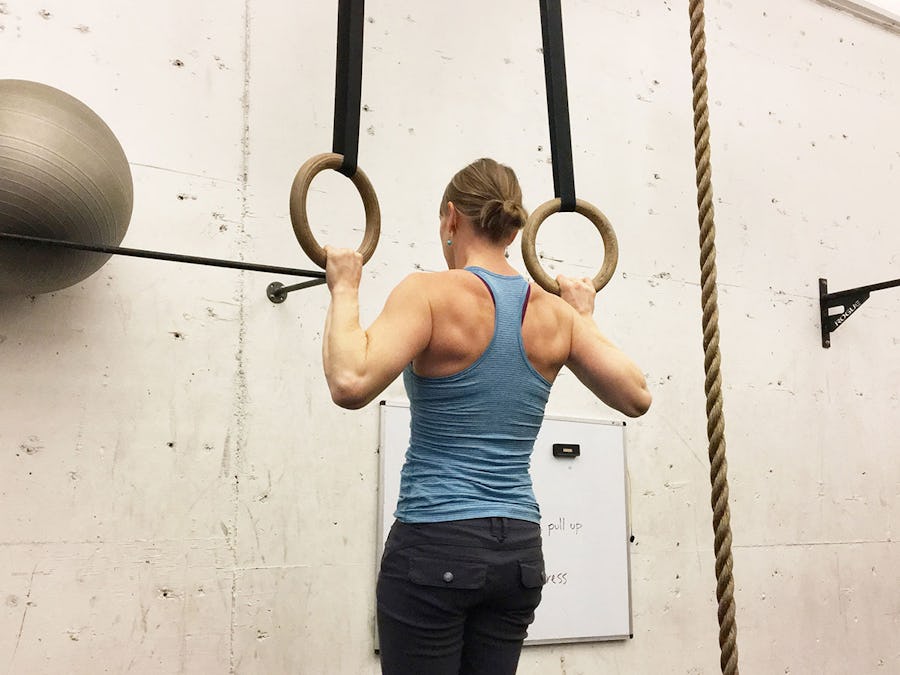
The key to targeting the rhomboids is pulling the shoulder blades back and together (scapular retraction), and then squeezing the muscles in that retracted position; this is what should occur at the end of a row. However, most people don’t achieve a full range of motion on their rows, let alone squeeze the contraction in the rhomboids. This is often times because they’re going too heavy. When you lift heavier than you’re ready to, you can’t drive your shoulders and elbows back far enough on a row for the rhomboids to fully engage.
Lightening the load on your rows is a good place to start when you’re trying to target the rhomboids. Less weight will make it easier to keep good form and concentrate on the rhomboid contraction. To train the rhomboid muscles through the greatest range of motion possible, Chow strongly recommends unilateral (one-arm) rows with a rotation at the top.
“I like using T-spine rotation to improve the amount of retraction you get,” says Chow. For instance, on a dumbbell row, after you pull the weight to your side, follow the momentum of the lift by twisting your working shoulder slightly away from the floor. “If you row with both arms at the same time, you’re not going to be able to cover as much range of motion,” says Chow. “By rotating while doing rows one arm at a time, you can protract the opposite side [move the opposite shoulder forward], which allows you to retract the working side even further.”
Because the rhomboids are involved in initiating downward rotation of the scapula, you also want to pull the shoulder blades down (while retracting them) when doing rows and even lat pulldowns. “Don’t let the shoulders come up toward the ears during a set,” says Chow.
“The shoulder blades need to move fully on the thoracic cage,” adds Rusin. “Not just down and back, but with rotation. Think of tucking your scaps into your back pockets when you do back exercises.”
Chow offers another important technique cue: keep your spine in a neutral position when you do any pulldown or row movement. “Don’t arch the lower back,” he says, citing a common mistake people make when doing rows, “and don’t let the upper back slouch.” You want your spine in a straight line so that you don’t risk injury to spinal discs. “You sometimes hear lifters using a ‘chest out’ or ‘big chest’ cue, but if you focus on that, it could cause you to arch the lower back. You don’t want that excessive lumbar extension.”
How To Stretch Your Rhomboids and Back

Use the following warmup drills from Onnit Durability Coach Cristian Plascencia (@cristian_thedurableathlete on Instagram) to prepare your body (and rhomboids, specifically) for any back training you do.
The Best Rhomboid Exercises for Strengthening Your Back
Below are three specific exercises, prescribed by Chow and Rusin, that will sufficiently target the rhomboids for improved posture, injury prevention, and strength and muscle gains.
1) Face Pull
Face pulls have become a popular prehab exercise among lifters because they activate the upper back musculature to improve posture and shoulder health. They do this, in part, by hitting the rhomboids, training both scapular retraction and downward scapular rotation.
Step 1. Secure a rope attachment to a cable pulley set to around forehead height. (You can also loop a resistance band around a sturdy object and grasp the free end with both hands.)
Step 2. Grasp the ends of the rope (just above the knots/rubber stoppers) with a palms-down grip, and step back from the cable column to create tension. Start with your body square to the machine, arms fully extended out in front of you, feet in line with each other, and knees slightly bent for stability.
Step 3. Contract your back muscles and bend your elbows to pull the rope straight toward your face, letting your hands go off to the sides of your head at around ear level. Your elbows should point outward.
Step 4. At the end of the range of motion, squeeze your shoulders blades together (retraction) and hold for a second or two. Reverse the motion to slowly return to the start position, and repeat for reps.
Do face pulls at the beginning of your back workout to activate the rhomboids, so that they’ll be primed to kick in harder on bigger exercises like rows, pulldowns, and pullups. Perform 2–3 sets of 15–20 reps, using a light-weight.
2) High-Angle, One-Arm Cable Row
In this exercise, the rhomboids are worked with constant tension. The cables create a slightly diagonal line of pull from high to low to capitalize on scapular downward rotation. You’ll also get torso (T-spine) rotation at the top of each rep to achieve full retraction of the rhomboids.
Step 1. Secure a D-handle attachment to a cable pulley and position it on the column at around eye level (to create a downward line of pull).
Step 2. Grasp the handle with one hand and step back from the column to put tension on the cable. With your body facing the machine, start with your working arm fully extended, your feet in a split stance (the one opposite of the working arm in front) and your knees slightly bent. Your torso should be at a slight forward angle, with your back straight.
Step 3. Maintaining a neutral wrist position (palm facing in), contract your back muscles to pull the handle in close to your side, just above your waist. Keep your core tight to maintain a rigid torso.
Step 4. As you approach the end of the rep, rotate your torso to open up your working shoulder to the side. Hold the end position for a second or two, squeezing the contraction in the rhomboids (upper-middle back), then slowly reverse the motion to return to the start position. Repeat for reps, then switch sides.
Do this exercise near the end of your back workout, after heavier rowing movements, lat pulldowns, and/or pullups. Perform 2–3 sets of 15 reps, using a light-to-moderate weight.
3) Suspension-Trainer Reverse “Y” Fly
Unlike the first two exercises, this is a single-joint movement, where the arms are essentially removed from the action; the rhomboids, after all, have nothing to do with elbow flexion. The suspension trainer offers the challenge of having you lift your own bodyweight, but the exercise can be made less difficult simply by moving your feet away from the anchor point for a more upright torso.
There are two main variations of bodyweight reverse flyes: Ts (where you extend your arms straight out to the sides) and Ys (you raise the arms diagonally upward). Rusin prefers Ys for hitting the rhomboids. “The higher angle triggers more upward rotation of the scapulas [at the start of the movement] for a better stretch and gives you full range of motion of the rhomboids.”
Step 1. Grasp the handles of a suspension trainer hanging from a high anchor point (above your head).
Step 2. Keeping your body in a straight line, lean back so your torso is around 45 degrees to the floor with your arms fully extended. (The more upright your torso is, the less difficult the movement will be; move your feet forward and back to find the appropriate resistance.)
Step 3. Keeping your elbows extended, contract your back muscles to pull your arms overhead and back in a Y shape, so you lift your body just shy of vertical.
Step 4. Squeeze your shoulder blades together for a second or two, and keep them pulled down. Then slowly lower your arms to the start position. Repeat for reps.
The Y raise can be done either early in your back workout (as a pre-exhaust) or near the end—after rows, pulldowns, and/or pullups. Perform 2–3 sets of 10–15 reps, using a body position that allows for controlled movements and proper form.
How Do You Treat A Strained Rhomboid?
Injury to the rhomboids can result from playing sports or routinely carrying heavy objects with less than perfect posture—such as a backpack, gym bag, or heavy equipment. Rhomboid strains are usually caused by overuse.
According to Chow, one of the most obvious signs of a strained rhomboid muscle is a sharp pain in the upper/middle-back area when taking a deep breath. Symptoms can also include general tightness and tenderness in the area. The most straight-forward treatment is to ice the area multiple times per day for around 20 minutes each. Aside from that, there are three other treatment methods that may help as well: isometric training, deep breathing, and foam rolling.
1) Isometric Training
To train a muscle isometrically means to squeeze it, so the muscle isn’t shortening or lengthening, but tensing in a static position. “The tension will provide an analgesic effect,” says Chow, “and increase blood flow to jumpstart the healing process.” Even though you’re technically working an injured muscle, Chow says that simply tensing it isometrically shouldn’t irritate it (but, of course, stop if it does).
Chow notes that the isometric exercises he uses to treat a strained rhomboid vary from client to client. But each of the three movements described above can be done isometrically by holding the end position of the rep (using a light weight) for anywhere from 10 to 30 seconds at a time for 3–5 sets.
2) Deep Breathing
Deep breathing drills are often prescribed for general stress reduction in the context of meditation and yoga, but Chow and Rusin both recommend them for treating a strained rhomboid.
“A strain will cause incomplete inhalation due to a protective mechanism on the rib cage,” says Rusin, “where the rhomboids are local to.” Within a few days after you get injured, your breathing patterns will most likely have shortened. “Therefore, deep breathing strategies are a must for ensuring that the dysfunctional breathing pattern doesn’t stay around.”
There are any number of ways to practice deep breathing. Here’s one method, via our Star Wars Fuel Your Force program.
3) Foam Rolling
Self-myofascial release (SMR) techniques like foam rolling can provide effective treatment to injured areas by, in Rusin’s words, “reducing neurological tone in the targeted muscle tissue,” which essentially reduces tightness and helps the muscles relax.
For a strained rhomboid, Rusin recommends his 3-Way Thoracic Spine Foam Rolling series. Here’s a short 30-second video demonstrating the three drills, courtesy of Rusin’s YouTube channel:
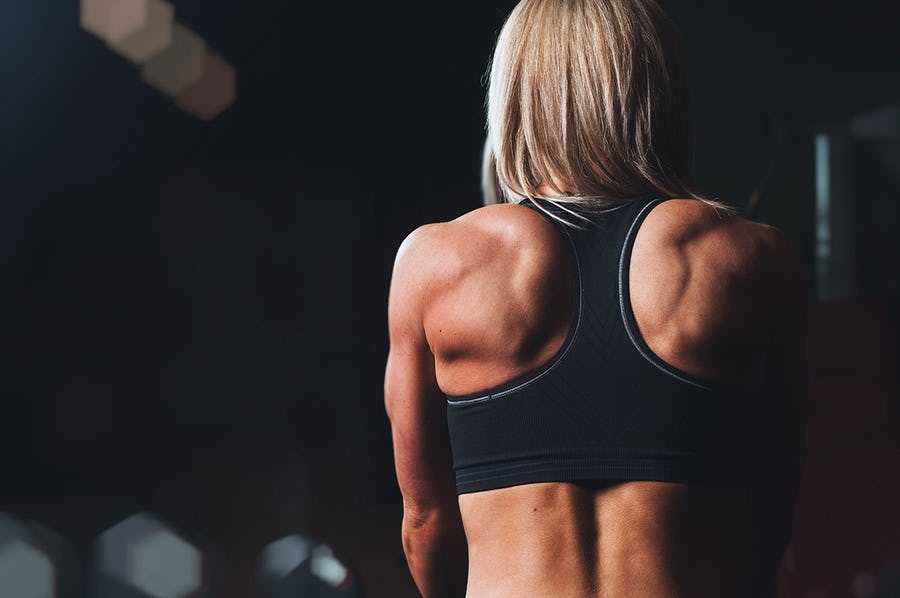
)


